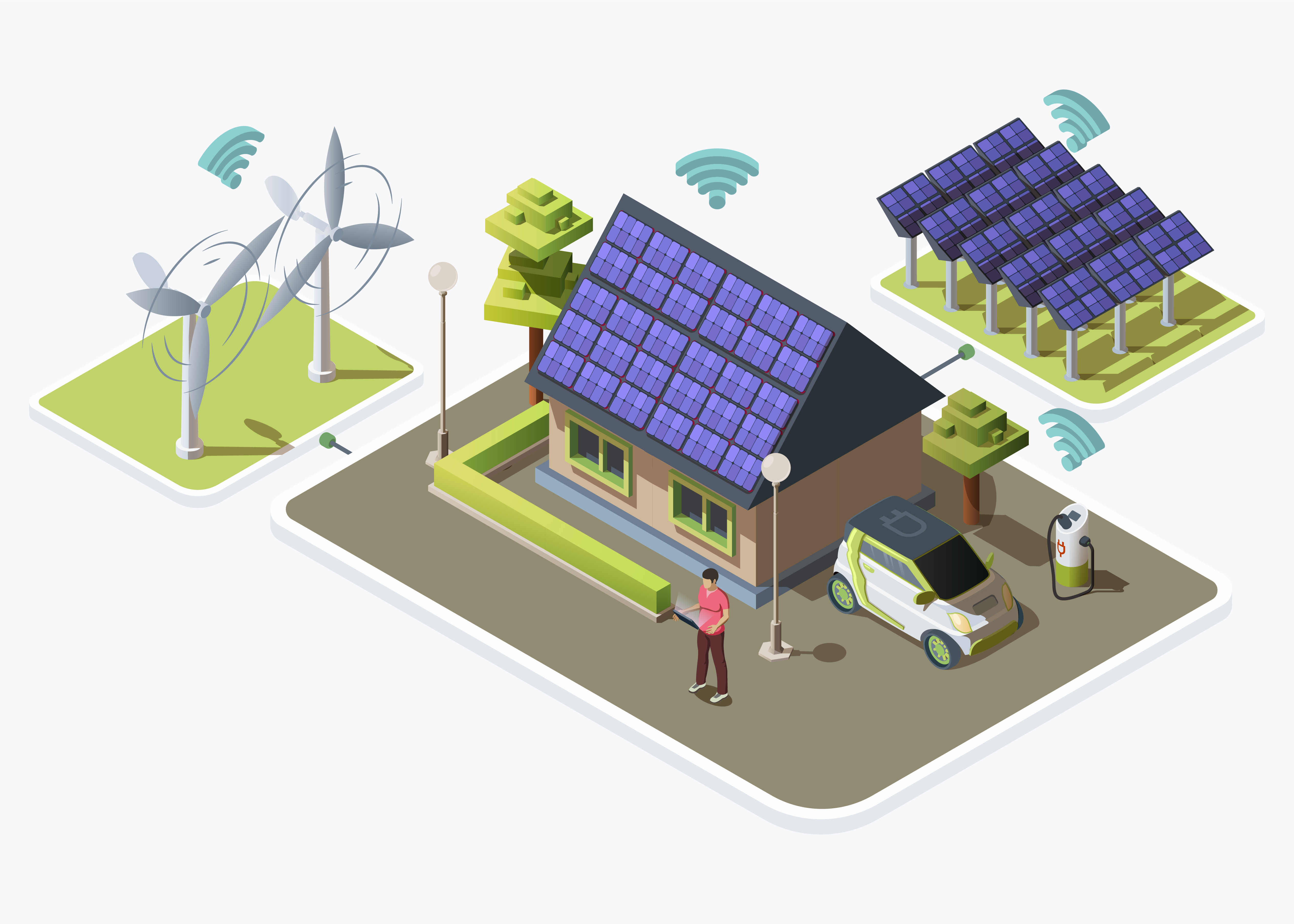1.5.2 Lecture Notes Role of Microgrid
Course subject(s)
1. Integration of Renewables Into the Electricity Grid

This image is from freepik
This lecture will discuss the role of microgrids in the energy systems of the future. This energy system will contain a set of cross-vector renewable technologies. This lecture will cover the following topics:
- The definition of a microgrid
- The definition of a microgrid control system
- The main characteristics of a microgrid
- The role of microgrids in energy systems of the future
The definition of a microgrid
Microgrids are small-scale networks that can facilitate the integration of distributed energy resources, electric vehicles, and controllable loads. This integration is expected to have a positive effect on the environmental impact and the economic performance of the grid. Microgrids are considered the building blocks of a smart grid. The technical definition of a microgrid is[1] :
“A group of interconnected loads and distributed energy resources with clearly defined electrical boundaries, that acts as a single controllable entity with respect to the grid and can connect and disconnect from the grid to enable it to operate in both grid-connected and island mode.”
The definition of a microgrid control system
A microgrid control system is a system that includes the control functions that define the microgrid. It should therefore be able to manage itself, operate autonomously, and connect to and disconnect from the main distribution grid. It also includes the functions of the microgrid energy management system (MEMS) if it is implemented as a centralized system.
The main characteristics of a microgrid
There are four characteristics that a microgrid should always have. These characteristics are listed below:
- The microgrid is an integration platform for local generation, storage, and demand. All of them are placed within the local distribution grid.
- A microgrid should be able to work in two operating modes: grid-connected mode and emergency mode (also known as islanded mode).
- A microgrid should enable an active operation of the distribution network.
- A microgrid can operate at a low, medium, or large scale.
-
-
-
- Low scale microgrids could typically be a house.
- A medium scale microgrid can be a factory.
- A large scale microgrid can be the size of a university campus or larger.
-
-
-
There are several advantages of microgrid compared to the existing passive distribution networks. These advantages are shown below:
- They are more resilient to failures since they can operate in islanded mode.
- They can provide a higher efficiency because power is generated at the location where it is consumed.
- They allow for a better integration of renewable energy sources.
The role of microgrids in the energy systems of the future
The main role of microgrids is to serve as an integration platform for distributed energy resources. They have the potential to provide a higher flexibility, due to higher levels of integration. A higher flexibility means that it is possible to integrate more renewables.
Unlike traditional networks, microgrid can be created in a modular manner, which means that they are more independently maintained, controlled, and expanded. Electrical components could easily be replaced or updated if needed.
Conclusion
This lecture discussed the role of microgrids. First, the definition of a microgrid and a microgrid control systems were explained. Then the four important characteristics of a microgrid were listed. And finally, the role of microgrids was discussed.
References
- IEEE Standard for the Specification of Microgrid Controllers, IEEE Std2030.7TM-2017

Technology of Intelligent and Integrated Energy Systems by TU Delft OpenCourseWare is licensed under a Creative Commons Attribution-NonCommercial-ShareAlike 4.0 International License.
Based on a work at https://online-learning.tudelft.nl/courses/technology-of-intelligent-and-integrated-energy-systems/



